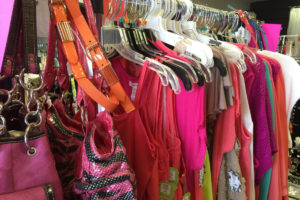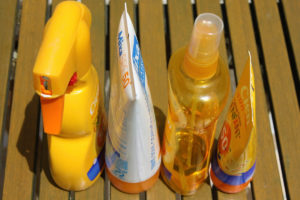 Some people in retail look forward to it and some dread it. What am I talking about? Inventory! From the planning stages and meetings with the inventory counting team to the actual inventory day it can all be a lot to accomplish even for the best of planners. But what happens when you get through the actual counting phase? What comes next? You wait for the results. You may get preliminary results immediately but for larger stores booked inventory may take several weeks and they have teams to analyze the results. As a small retailer you may have to analyze the reports yourself but do you really understand what you are looking for? Are your results accurate? Stores have to keep track of what they have on hand and owners need to know where shortage has taken place and how it has happened.
Some people in retail look forward to it and some dread it. What am I talking about? Inventory! From the planning stages and meetings with the inventory counting team to the actual inventory day it can all be a lot to accomplish even for the best of planners. But what happens when you get through the actual counting phase? What comes next? You wait for the results. You may get preliminary results immediately but for larger stores booked inventory may take several weeks and they have teams to analyze the results. As a small retailer you may have to analyze the reports yourself but do you really understand what you are looking for? Are your results accurate? Stores have to keep track of what they have on hand and owners need to know where shortage has taken place and how it has happened.
A detailed review of the inventory results is important. They can identify areas that may be indicators of poor vendor service. If your store sells groceries, snacks, soft drinks or adult beverages you are most likely served by direct store delivery vendors. If a shortage is somewhat high in these departments you might not be receiving all of the credits you are supposed to receive. This is not necessarily an indicator of theft but it could be. It may be simply poor scanning and crediting for merchandise a vendor is removing from the store. Those credits could be due to product getting ready to expire or that has expired. It may be it was a promotional product that isn’t selling in the quantities the vendor was hoping for. Whatever the reason, the representative could have miscued an entry, for example, scanning a partial pallet of sodas and keying in a quantity of 10 versus 100. If the vendor is in a hurry and no one caught the error at the time it could be costing your store a lot of money.
While we are talking about administrative errors causing shortage it is important that store owners take a look at all of their billings. In a big box retail store, we had monthly P/L (profit/loss) statements that showed the dollar amounts of merchandise shipped to us for each department. One year when inventory results revealed a high shortage result in our shoe department I went back through all of the P/L statements and found an unusual billing amount. I tried to correlate it to a seasonal reset or specific event but was unable to pin it to anything in particular. I sent my concern to our inventory analysts who reviewed the information and found we had been overcharged $10,000 in the shoe department that particular month. Review P/L statements or invoices for potential errors if inventory results seem out of line.
Look at the departments that are showing the shortage. Do they look like areas that would be prone to theft or could there be other administrative issues involved? For example, if you own an office supply store and you have a high shrinkage in printer ink cartridges there is a strong probability this is a theft concern. On the other hand, shrink in foam project boards could be due to process issues. Are individual foam boards shipped in multi-pack shrink wrap? It could be the items are not being separated and a bulk set is improperly sold as a single unit at the register. Have individual units been damaged and unsellable but not properly marked out of stock before tossing them? Foam boards are probably not being stolen but improper handling is costing money to your store just the same.
Certainly, theft has to be a consideration in the review of inventory results. But one must be careful not to attribute ALL shortage to theft. Doing so may keep you from impacting up to 26.7% of your losses in the next inventory cycle. According to the 2017 National Retail Security Survey, 21.3% of a shortage is due to administrative and paperwork errors and 5.4% is the result of vendor fraud or errors. That said it is important to dig into potential theft concerns that are impacting your store. Are you the target of shoplifters? Do you have an employee theft problem you did not realize existed? Getting a handle on theft must be part of your follow-up in creating a shortage action plan to improve shrinkage. Consultation with Loss Prevention Systems Inc. is a good starting point for finding a solution to all of your shortage concerns, theft included.
If you take inventory and find you are missing SKU’s because results are askew, take time to dig into the findings. Knowing where shortage happened this year and taking steps to correct it will give improved results next year.
 March is known for coming in like a lion and going out like a lamb. April showers bring May flowers but what in the world does May bring? May ushers in the summer sales season! Spring is wrapping up and now is the time to be getting your store ready for all of the shoppers looking for the items that will make the long, warm days of June, July and August a memorable time. The big stores are rolling out grills, picnic wares and yard games.
March is known for coming in like a lion and going out like a lamb. April showers bring May flowers but what in the world does May bring? May ushers in the summer sales season! Spring is wrapping up and now is the time to be getting your store ready for all of the shoppers looking for the items that will make the long, warm days of June, July and August a memorable time. The big stores are rolling out grills, picnic wares and yard games. The scary shoplifting cases we hear and see on TV, or on newspapers in the United States, are becoming too commonplace to rendered us shocked.
The scary shoplifting cases we hear and see on TV, or on newspapers in the United States, are becoming too commonplace to rendered us shocked.  Recently, I conducted an employee theft investigation for a client. I want to share some of the findings from that investigation in the hopes that you can use it to review your own potential for losses.
Recently, I conducted an employee theft investigation for a client. I want to share some of the findings from that investigation in the hopes that you can use it to review your own potential for losses.  Sometime this year you will most likely be conducting an inventory. Some stores even conduct multiple inventories when they have high stock shortage results. While it does not necessarily translate to poor results, a lack of adequate preparation can have an impact on the final shortage numbers.
Sometime this year you will most likely be conducting an inventory. Some stores even conduct multiple inventories when they have high stock shortage results. While it does not necessarily translate to poor results, a lack of adequate preparation can have an impact on the final shortage numbers. Because like alcohol abuse, both legal and illegal drug use, affects your bottom line. This issue
Because like alcohol abuse, both legal and illegal drug use, affects your bottom line. This issue 
 As managers and supervisors, we are all guilty at some point of assuming our employees will know what we are wanting from them when we make a request or assign a project. It may be something as simple as asking someone to empty a trash canister or as complicated as resetting a plan-o-gram. In our minds, the requested task may only require common sense but to the employee, it may be something totally different. Take the trash can example, you may ask an employee to empty it and assumed they would empty it into a compactor and place a new trash can liner inside. The employee may only hear that you want them to take the bag out and place the trash beside the compactor. They don’t hear you tell them to put a new liner inside the canister when they are done because you never said it. It seems like it should only be common sense but it isn’t necessarily the case. The same problem exists for every aspect of a job. Sometimes those of us in management positions make unfair assumptions and then get angry when our team members don’t do what we expected them to do.
As managers and supervisors, we are all guilty at some point of assuming our employees will know what we are wanting from them when we make a request or assign a project. It may be something as simple as asking someone to empty a trash canister or as complicated as resetting a plan-o-gram. In our minds, the requested task may only require common sense but to the employee, it may be something totally different. Take the trash can example, you may ask an employee to empty it and assumed they would empty it into a compactor and place a new trash can liner inside. The employee may only hear that you want them to take the bag out and place the trash beside the compactor. They don’t hear you tell them to put a new liner inside the canister when they are done because you never said it. It seems like it should only be common sense but it isn’t necessarily the case. The same problem exists for every aspect of a job. Sometimes those of us in management positions make unfair assumptions and then get angry when our team members don’t do what we expected them to do. Some of the most stolen items in stores in the United States are not surprising. From Infant formula to razors, people are stealing these items to sell them for quick cash or because they are shoplifters that are dedicated to doing this crime. Valentine’s Day is approaching, and some of the items that seem to be gifted during this day are among the most commonly stolen items in the United States. A shoplifter will steal any time of the year, whether the opportunity presents itself or not, or whether it’s a holiday or a weekday. As a store manager or employee of a store, greeting and treating a customer politely can gain you a customer, and deter a shoplifter from stealing from your store. Customer service has been proven time and again to be a great deterrent to shoplifters, and cannot hurt to be polite and competent with your regular customers.
Some of the most stolen items in stores in the United States are not surprising. From Infant formula to razors, people are stealing these items to sell them for quick cash or because they are shoplifters that are dedicated to doing this crime. Valentine’s Day is approaching, and some of the items that seem to be gifted during this day are among the most commonly stolen items in the United States. A shoplifter will steal any time of the year, whether the opportunity presents itself or not, or whether it’s a holiday or a weekday. As a store manager or employee of a store, greeting and treating a customer politely can gain you a customer, and deter a shoplifter from stealing from your store. Customer service has been proven time and again to be a great deterrent to shoplifters, and cannot hurt to be polite and competent with your regular customers.